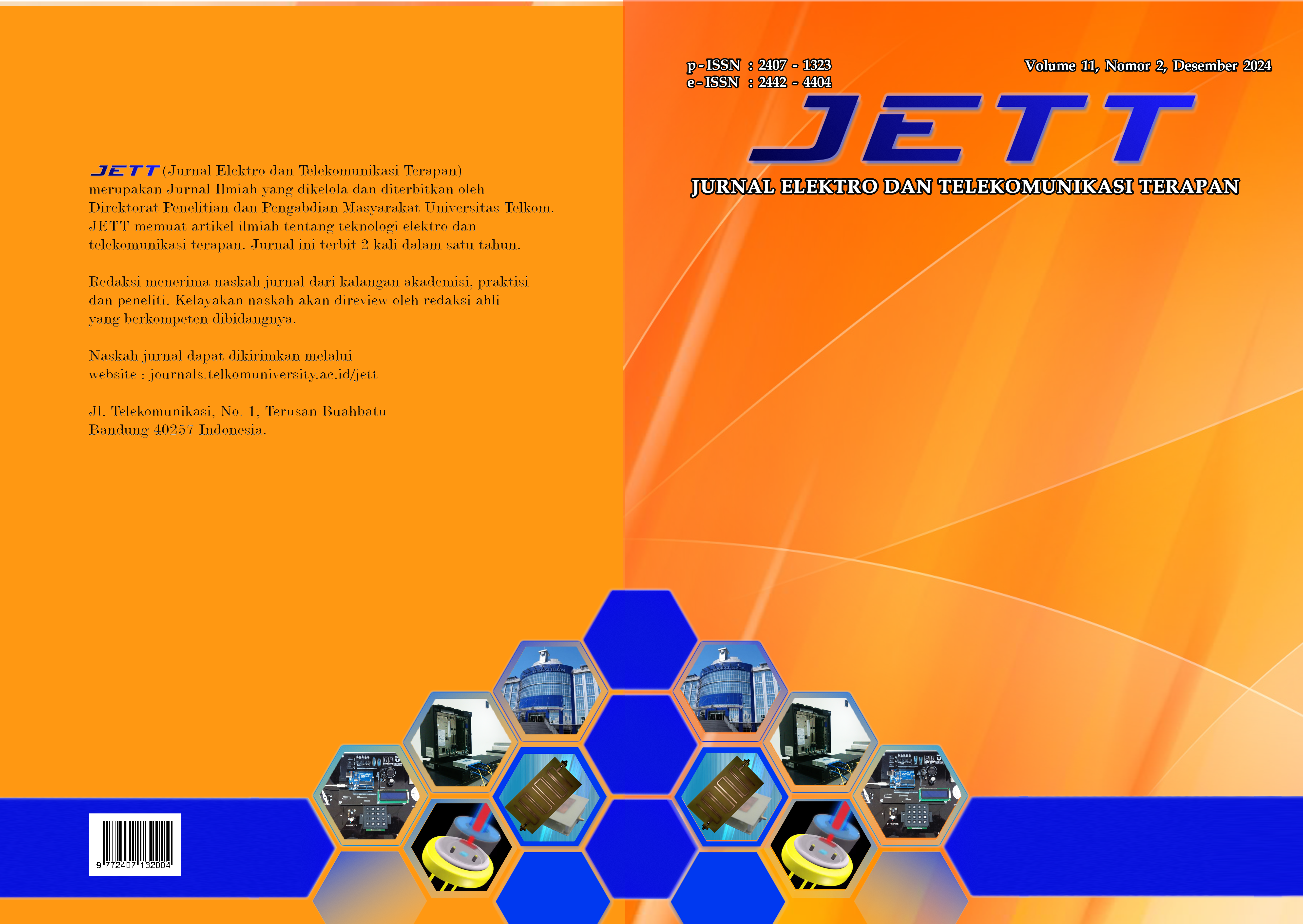| Issue | Vol. 6 No. 1 |
| Release | 07 January 2020 |
| Section | ELECTRONICS |
Angklung is an art tool made of bamboo originating from West Java. Although angklung has been known worldwide, even UNESCO (United Nations of Educational, Scientific, and Cultural Organizations) has designated the instrument as part of Indonesian original art, but unfortunately this traditional musical instrument is almost extinct. On the other hand, technological developments help and make it easier for humans to do anything. One form of technological development is robots. Therefore, this article will discuss about the design of the angklung robot control system. The design consists of two parts, namely the design of the angklung robot and the design of the angklung robot control application. Some components used in angklung robots include Bluetooth HC-06, Arduino Uno, and relay modules, while for Android-based control applications. The process of sending data from the application to the angklung robot using Bluetooth communication. The results show that the angklung robot control system can transmit data at a distance of less than 10 meters and with an average delay of 0.303 seconds. For the functionality of the 100% angklung robot control application it can work in accordance with the initial design.
Keywords: angklung, robot, Bluetooth communication
Y. Rahayani and B. Macgill, “The Angklung : The Maintenance of Indonesian Cultural Heritage through Public Pedagogy,†J. Public Pedagog., no. 2, 2017.
D. Mahmud, “25 Alat Musik Bambu Asli Indonesia yang Hampir Punah,†2012. [Online]. Available: https://www.kompasiana.com/kangdede/55183685813311a9689dea1b/25-alat-musik-bambu-asli-indonesia-yang-hampir-punah.
Y. Indrawaty, M. Ichwan, and A. Erlangga, “Pengembangan Simulasi Pola Memainkan Angklung,†J. Inform., vol. IV, pp. 12–20, 2013.
M. R. M. Zainal, S. A. Samad, A. Hussain, and C. H. Azhari, “Pitch and Timbre Determination of the Angklung,†Am. J. Appl. Sci., vol. 6, no. 1, pp. 24–29, 2009.
B.-Z. Sandler, Robotics, Second. London: Academic Press, 1999.
dan P. T. Kementrian Riset, Teknologi, “Panduan KRSTI 2019,†2018. [Online]. Available: https://kontesrobotindonesia.id/data/2019/Panduan_KRSTI2019-Rev.pdf.
A. De Lama, U. Sunarya, A. Novianti, and F. I. Terapan, “DETEKSI LOGAM PADA PENGGILINGAN BATU BERBASIS SMS GATEWAY DAN MIKROKONTROLER METAL DETECTOR FOR STONE CRUSHER,†J. Elektro Telekomun. Terap., pp. 370–378, 2016.
A. Novianti, U. Sunarya, and F. I. Terapan, “BERBAHAYA BERBASIS LOGIKA FUZZY DAN KONTROL ANDROID ROBOT DESIGN OF HAZARDOUS ENVIRONMENT DETECTION,†J. Elektro Telekomun. Terap., pp. 31–39, 2015.
J. Lee, Y. Su, and C. Shen, “A Comparative Study of Wireless Protocols : Bluetooth, UWB, ZigBee, and Wi-Fi,†IEEE Ind. Electron. Soc., pp. 46–51, 2007.
M. Collotta, G. Pau, T. Talty, and O. K. Tonguz, “Bluetooth 5 : A Concrete Step Forward toward the IoT,†IEEE Commun. Mag., vol. 56, no. July, pp. 125–131, 2018.
Copyright Notice
An author who publishes in the Jurnal Elektro dan Telekomunikasi Terapan agrees to the following terms:
- Author retains the copyright and grants the journal the right of first publication of the work simultaneously licensed under the Creative Commons Attribution-NonCommercial 4.0 International License that allows others to share the work with an acknowledgement of the work's authorship and initial publication in this journal
- Author is able to enter into separate, additional contractual arrangements for the non-exclusive distribution of the journal's published version of the work (e.g., post it to an institutional repository or publish it in a book) with the acknowledgement of its initial publication in this journal.
- Author is permitted and encouraged to post his/her work online (e.g., in institutional repositories or on their website) prior to and during the submission process, as it can lead to productive exchanges, as well as earlier and greater citation of the published work (See The Effect of Open Access).
Read more about the Creative Commons Attribution-NonCommercial 4.0 International License. here: http://creativecommons.org/licenses/by-nc/4.0/.
Privacy Statement
The names and email addresses entered in this journal site will be used exclusively for the stated purposes of this journal and will not be made available for any other purpose or to any other party.


